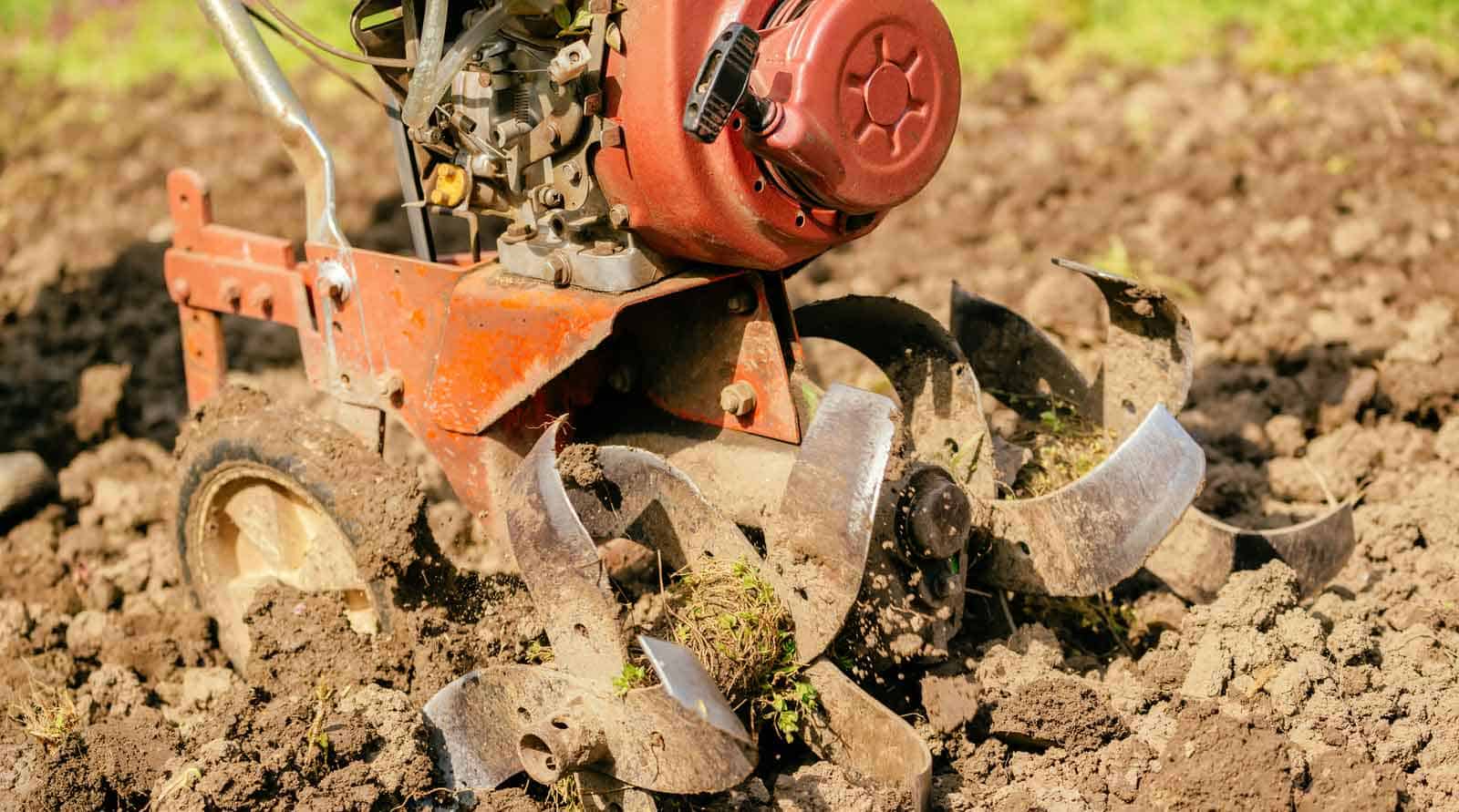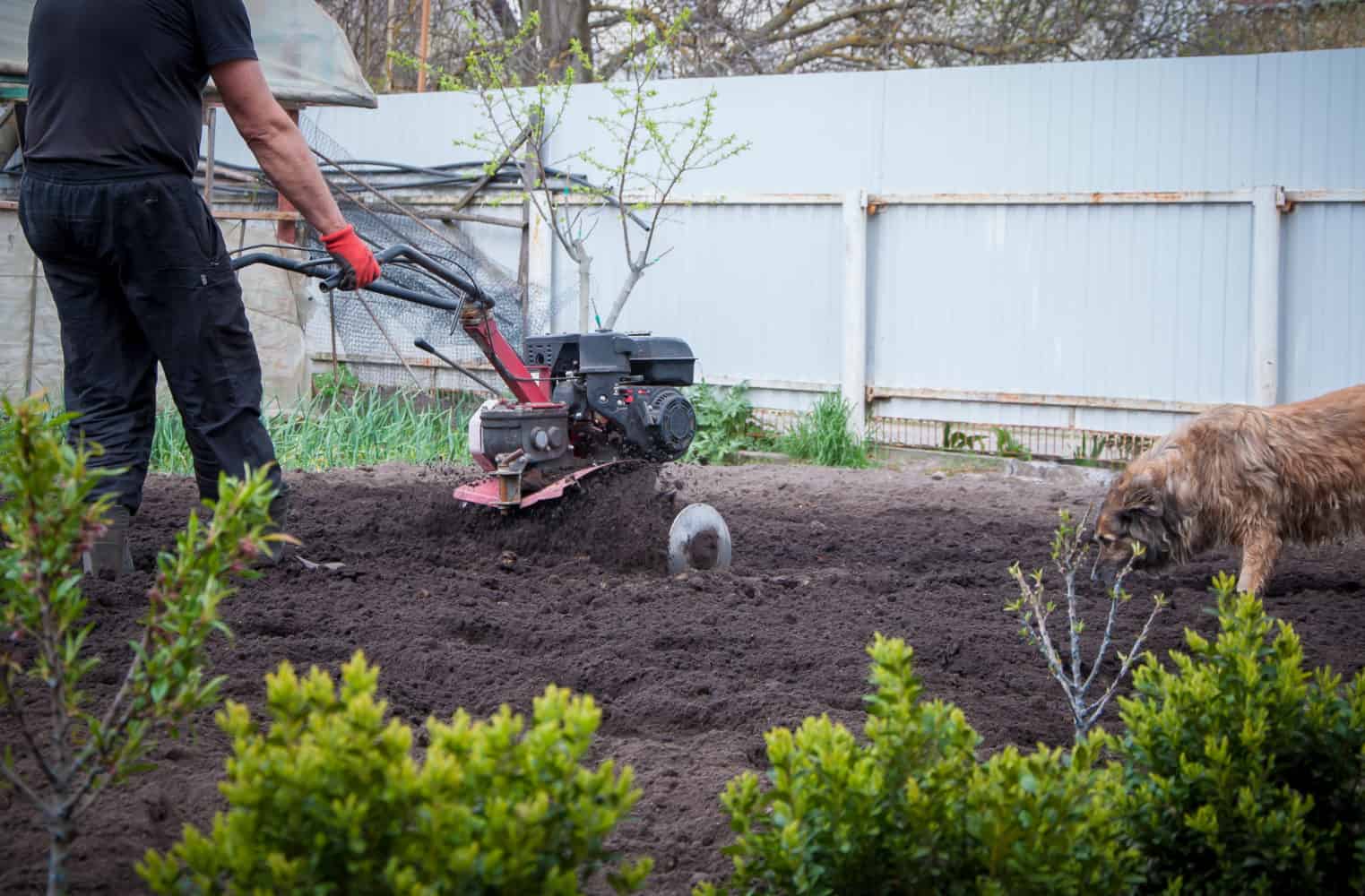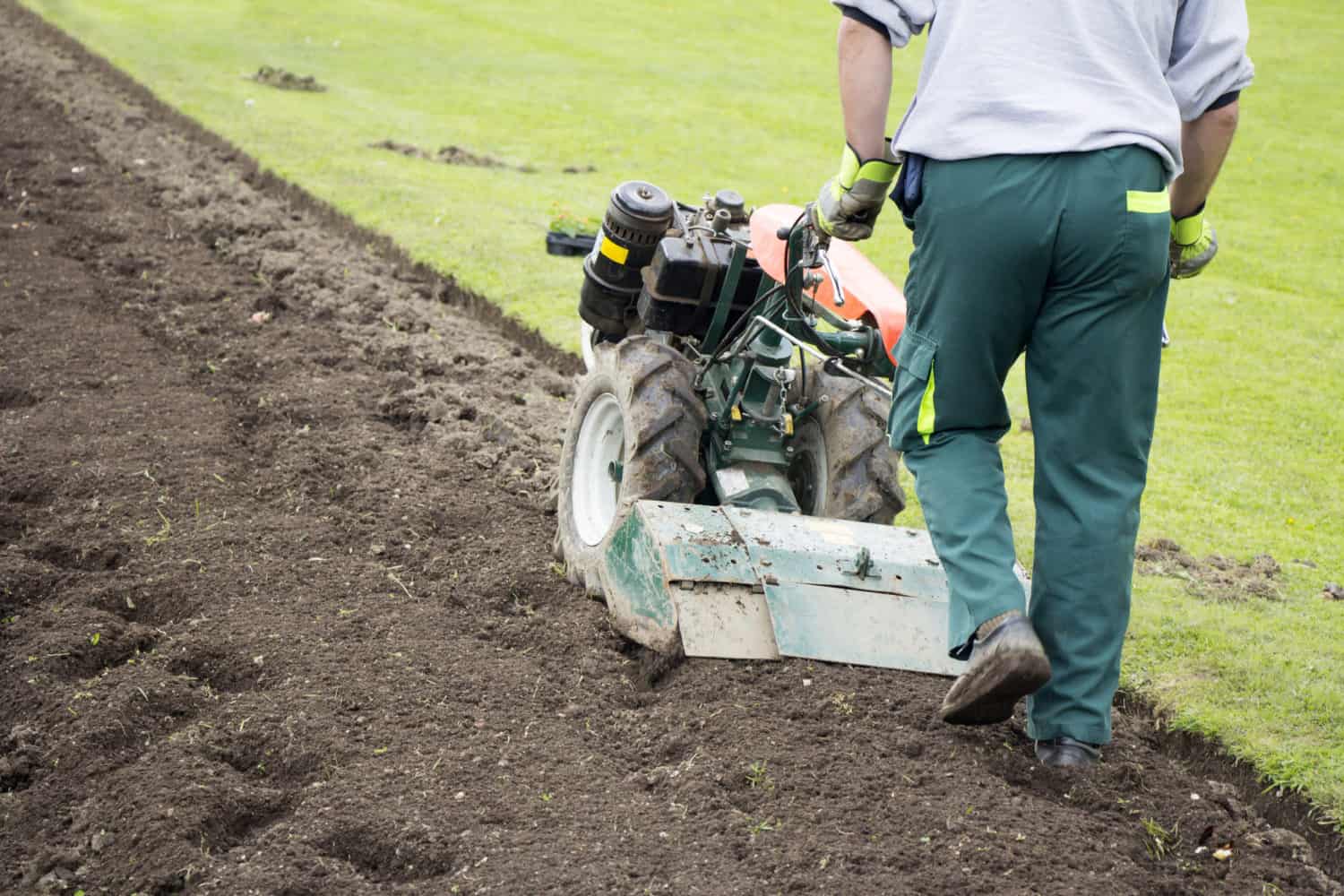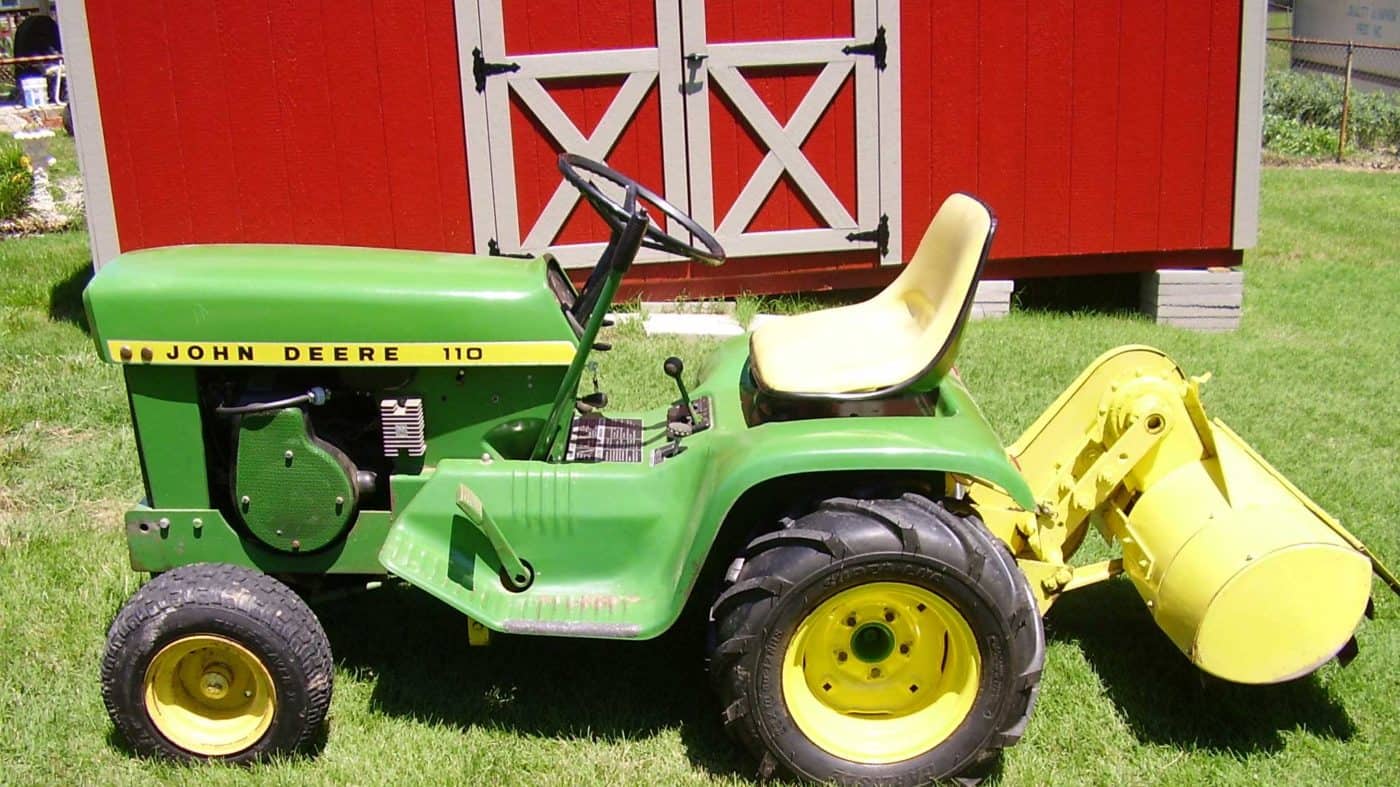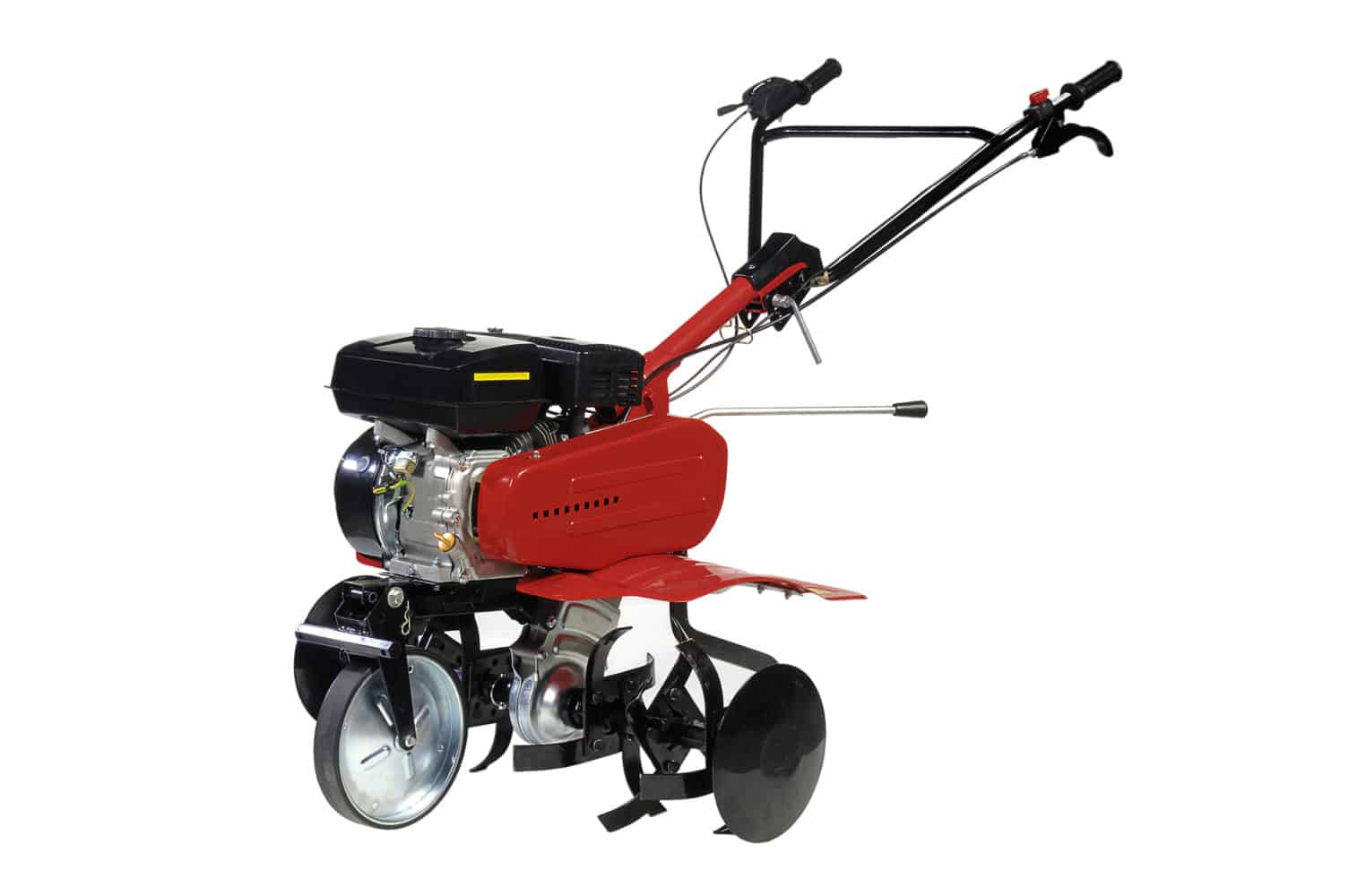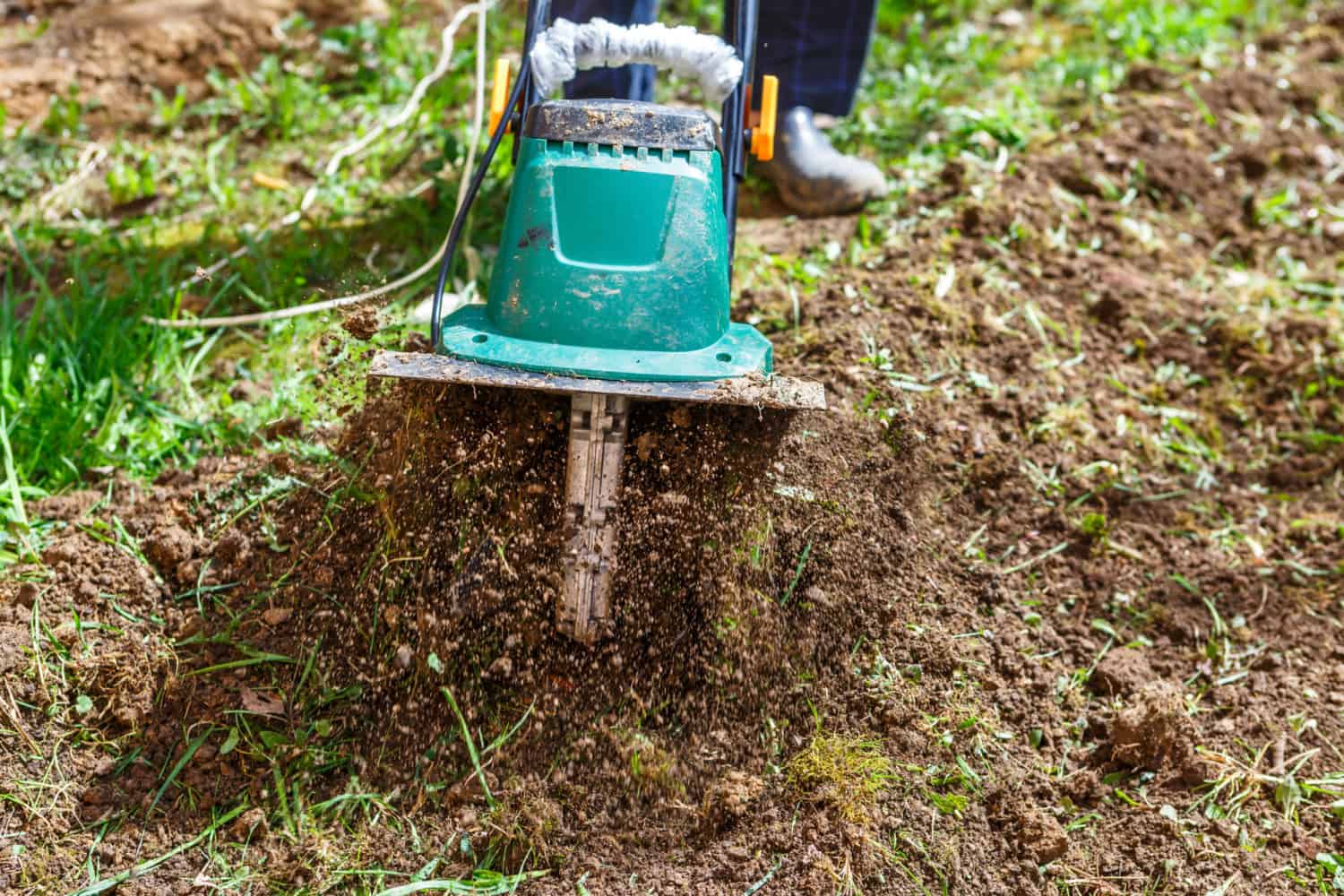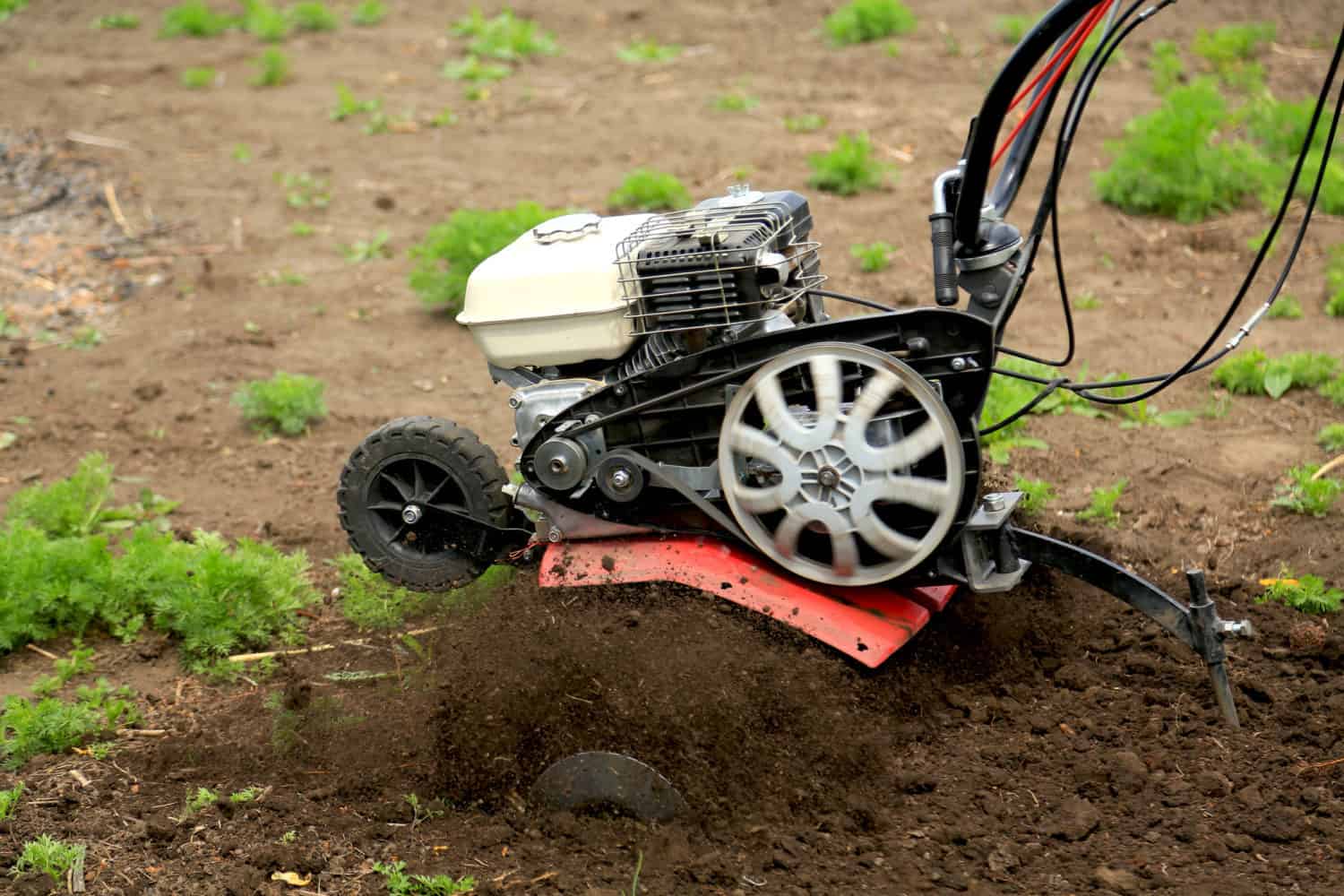Are you a gardening lover? Then you must have come across and used a tiller. It is an essential tool for gardeners in land clearing and soil preparation ready for planting. It aerates the soil by breaking up the hardpans into fine tilth. It is worth considering if you need a plow or a tiller before you buy anything if you have a very large plot.
It is essential to understand that plants require properly aerated soil to ensure roots spread widely to receive necessary nutrients. We have to break the hardpans to get the right soil conditions essential for plant growth. Other reasons for land tilling may include water balancing and weed staving. In a more precise way, a tiller is used for several reasons.
Contents
Garden Tillers Used for the Following
To remove the weed/ weed control mechanism
Have you spent days weeding only to see new weeds regrowing even before the weekend? It may be because you have only removed the visible part of weeds leaving the roots. To completely get rid of weeds, you need to use the best garden tiller, a small pull behind tiller is usually good for most gardens. These can be attached to most garden tractors. It will eliminate the roots, thus, effectively clearing your land for planting.
Why do I need to eliminate weeds and grass from a piece of land? Apart from creating space for growing new plants, weeding ensures removing unwanted plants that would otherwise compete for water and nutrients inhibiting new plants from growing properly. Besides, weeds grow faster than crops and can overshadow them, preventing them from receiving direct sunlight necessary for the germination and photosynthesis process.
To break hardpans
For proper plant growth, fine tilth is needed. Otherwise, the roots can’t penetrate through hardpan in search of water, nutrients, and oxygen necessary for growth. Poorly penetrated soil is at the risk of causing flooding as the water is unable to seep incorrectly. Through tilling, you break the hardpans to a porous planting soil.
Assist in obtaining nutritious soil
For plant growth, nutrients are an essential element. The harsh climatic condition can deplete nutrients from the topsoil, making it challenging to support growth. By tilling your land, you move the best soil to the top facilitating proper plant growth.
To incorporate organic matter into the soil
Most farmers spread manure from animals on the land. Through tilling, you turn organic matter into the soil, which facilitates decomposition and adds nutrients to the earth from the organic matter. Manures are known to be rich in nitrogen, essential for plant growth. By tilling the land, you not only mix soil with organic matter but also increase oxygen, which speeds up decomposition making more oxygen available for the plant roots.
To destroy insects and their breeding ground
By tilling the garden, you destroy any harmful insect on the ground by exposing it to the topsoil’s harsh climatic conditions. Also, you destroy their breeding ground, preventing future regeneration that may harm the crops.
Manages water infiltration process
Through tilling, you break the hardpans facilitating proper filtration to the ground. For proper plant growth, the necessary amount of moisture is needed to be maintained at all times. When the soil is not broken to a fine tilth, water will not penetrate the desired depth. With little exposure, it will evaporate, leaving the ground dry and unfavorable for plant growth.
Besides, poor water filtration can result in soil erosion. When the Water fails to penetrate to the ground, it moves over, causing deterioration.
The Difference Between A Tiller And A Cultivator
Are you just starting your garden? You are likely wondering about the difference between a tiller and a cultivator. While they may seem similar, they are entirely two different types of machinery, especially when it comes to usage.
Usage
In terms of usage, a rear tine tiller is used to prepare virgin land for planting purposes. It is capable of breaking the hardpan and digging deep to eliminate weeds. Are you preparing the ground ready for planting? A tiller can be the best option for you. It is also used at the year-end to mix the remaining vegetation into the soil for decomposition. Do you have a tractor till the land? You are likely to have large soil pans or rocky soils that need loosening. To handle this type of work, you need to use a tiller.
On the other hand, a cultivator is used after seed germination to loosen the soil around the growing crops. They remove weeds while at the same time aerating the soil. By maintaining a weed-free zone, the plants grow free of water and nutrients robbers. It is also used while incorporating fertilizers and manure into the ground. Cultivation facilitates moisture penetration, thus, promoting water retention.
Construction, design, and size
In terms of construction and design, a cultivator is smaller than a tiller. Thus, they are used in general garden maintenance after planting or sometimes to clear smaller gardens. It is of the same size as a lawnmower but is not covered with a guard. However, a tiller is large and used to do the handwork during the first land preparation before and after harvesting. The standard model used gasoline and required high powered electricity to run. The metal tines are made of heavy-duty materials and are either located at the back of the front. If you use small tillers, make sure not to overestimate tillers’ capabilities, as they are not suitable for handling large stones and hard roots. For smaller rocks and tree roots, you should be fine.
Do I Need A Tiller For My Garden?
Are you new to gardening? Then you are probably not aware of how challenging it can be to prepare the virgin ground for planting. If you are wondering whether to buy a tiller for your garden or not, there is no definite answer. It will solely depend upon are several factors. They include:
Usage
If you are planning on preparing a new piece of land, then you need a tiller, front tine tillers are the most used. Consider whether you are using it for subsistence or commercial purposes. If the tiller is for home use, you will probably use it twice; before planting and after harvesting. Thus, instead of buying, you can consider renting or buying an affordable one for ongoing usage. But if it is for commercial purposes, purchasing a powerful tiller is a more suitable option.
Type of soil
Does your garden have soft and loose soil that is easy to plant? Then, there is no use in buying a tiller. However, if the soil is rocky, buying a tiller can be a better choice for you.
The size of the garden
Is your garden large or small? For smaller gardens use of a tiller is not recommended. However, for large tracks of land, a tiller can ease and promote faster delivery of work.
The source of power
If you are considering using large tillers, you need to ensure your gas source while smaller ones use electricity. See 15 Best Electric Garden Tillers.
Can You Plant Immediately After Tilling?
How soon can I plant after tilling my garden? If it is your first time doing gardening work, you need to take some time. It is not advisable to plant the seedlings immediately after tilling the land. It would be best if you understood that tilling your land disrupts the soil microorganism responsible for nutrient formation. Thus, there are some reasons why it is not advisable to plant immediately after farming your land.
After tilling your garden, you have exposed weed to the sun. You, therefore, need to give it time to dry up. If you go planting immediately, you will likely cover the weed into the soil, promoting weed regeneration.
By taking off time before planting after tilling, you allow the weeds’ remaining roots to regrow and remove them. Weeds usually grow faster than the crops. If you plant immediately, the remaining weeds underground will grow more quickly, competing for nutrients and Water with the plants. Lack of enough nutrients and Water will weaken the crops resulting in slower growth of unhealthy crops and a high likelihood of death.
Taking at least two to three weeks off planting after land tilling allows essential microorganisms and organic material disrupted during tiling to reestablish and facilitate the development of nutrients in the soil. Nutrients are an essential element for health and faster plant growth.
To allow soil correctors facilitates nutrients breakdown and spread throughout the soil. It does not take overnight to convert fertilizers and manure into nutrients. After tilling the land, you may want to incorporate fertilizers and manure into the soil to boost nutrients. In this case, you should allow your garden sometime before planting.
When Should I Start Tilling My Garden?
Are you anxious about preparing your garden? Timing is of the essence. The best time to till your garden is during spring. During this period, the soil is dry, and the weather is becoming warmer. This period can start early as March or wait until May of June. The variation of the timing depends upon the region you are located.
Tilling the land during spring exposes the weed seeds to warmth, preparing them for germination. However, tilling during the other three seasons could facilitate weed generation.
However, you should avoid tilling the land during wet seasons as it can damage the existing soil structure necessary for crop growth.
How do you confirm that the soil is dry enough to plant? Insert a trowel into the ground and determine if it is dry. If you experience difficulties while inserting it into the earth, it is not ready for tilling, but if it is easy, then it is ready for tilling.
Tilling the land during this period may slightly delay planting, but it can still yield a positive result if one does not take many breaks from growing vegetables.

